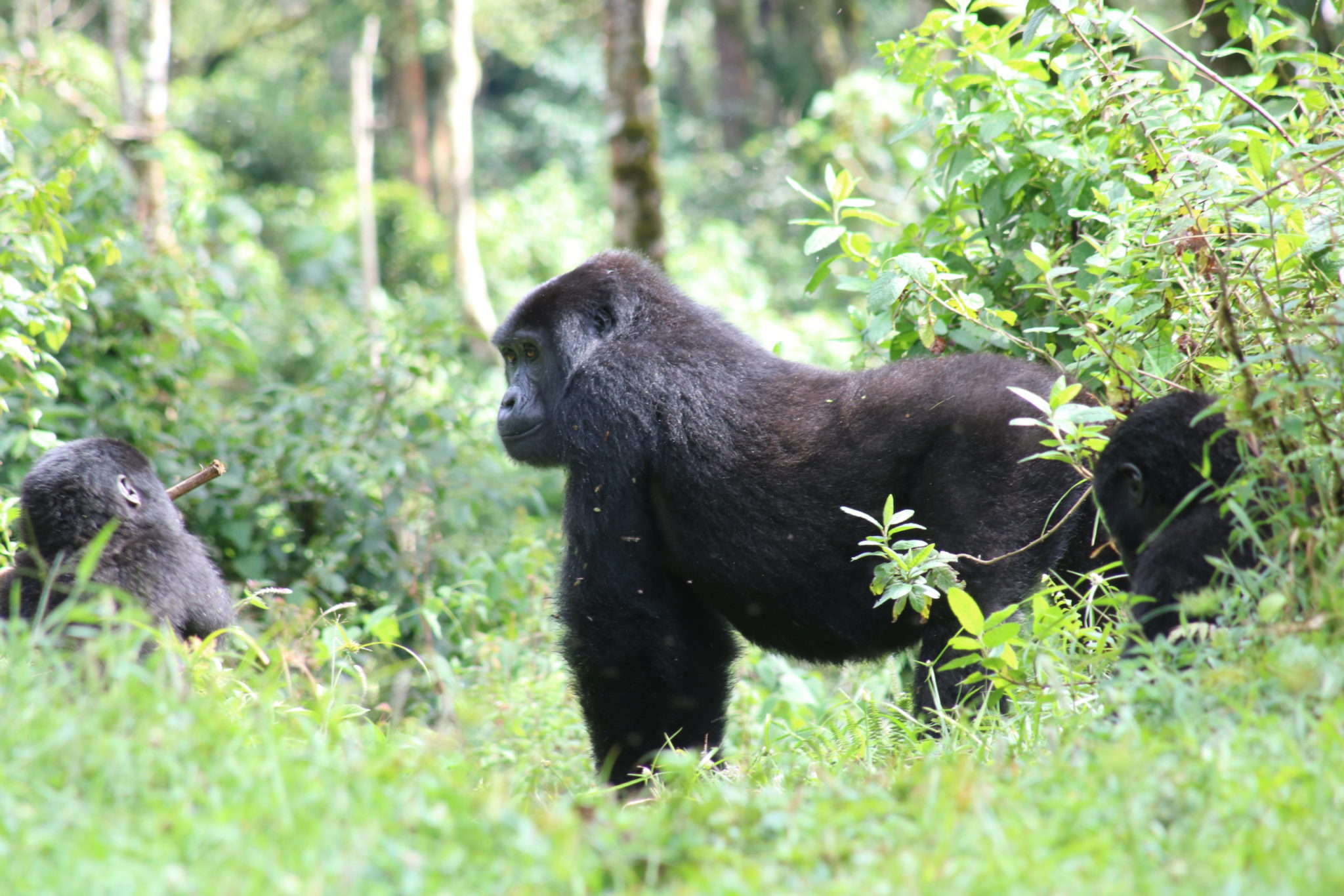
Bwindi Impenetrable National Park
April 1, 2025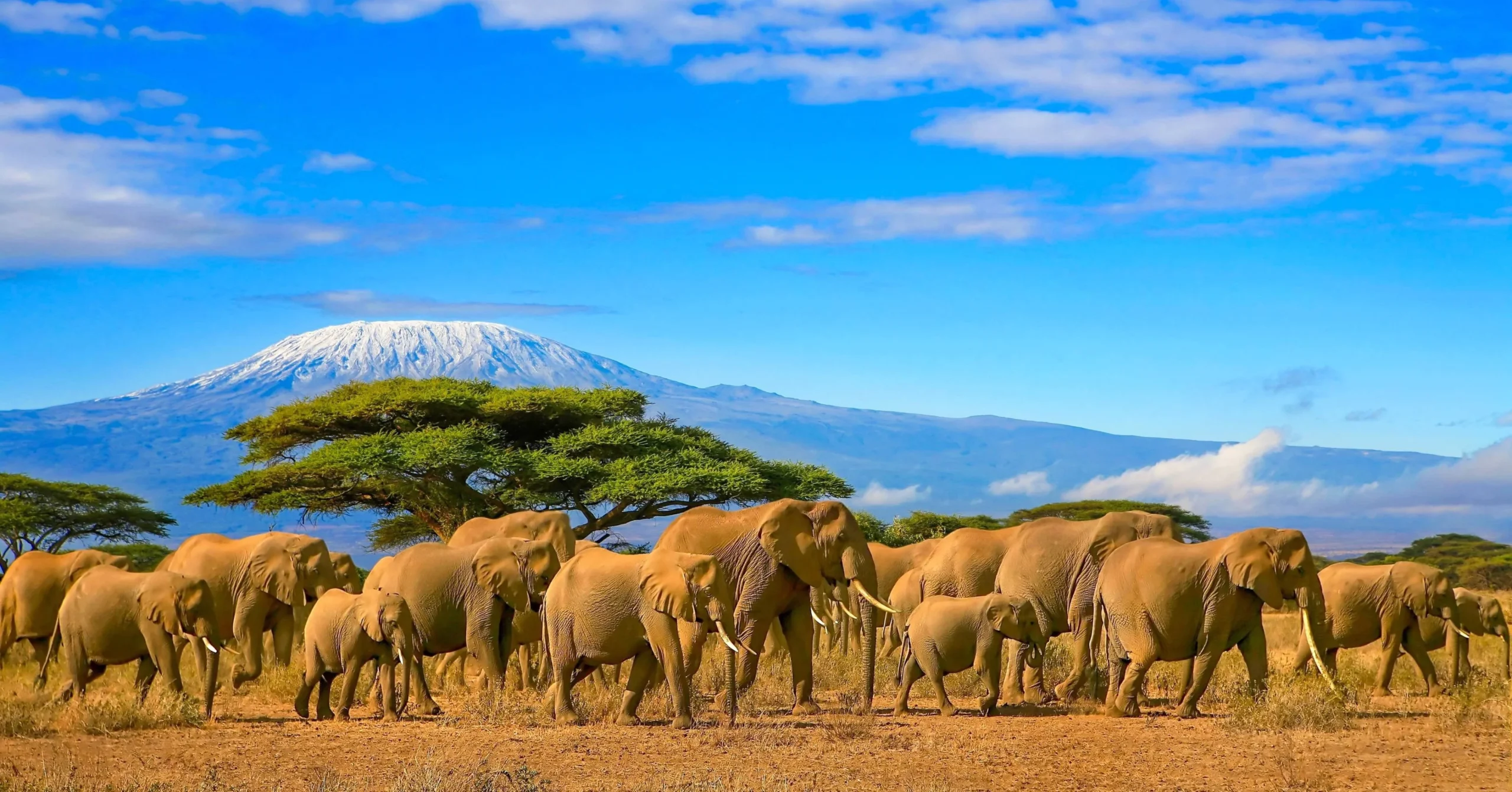
Amboseli National Park
April 1, 2025Queen Elizabeth National Park
Queen Elizabeth National Park (QENP) is one of Uganda’s most popular and diverse national parks. Located in the western part of the country, it spans across approximately 1,978 square kilometers (763 square miles) and is renowned for its rich wildlife, varied ecosystems, and beautiful landscapes. The park is a must-visit destination for wildlife enthusiasts, birdwatchers, and travelers seeking a quintessential African safari experience.
Overview of Queen Elizabeth National Park
– Location: Western Uganda, near the Rwenzori Mountains and the shores of Lake Edward and Lake George.
– Established: Queen Elizabeth National Park was established in 1952 and is named in honor of Queen Elizabeth II, who visited the park in 1954.
– UNESCO Biosphere Reserve: In 1979, the park was designated a UNESCO Biosphere Reserve due to its biodiversity and ecological significance.
Key Attractions in Queen Elizabeth National Park
QENP is known for its diverse habitats, which include savannah, wetlands, forests, and crater lakes, providing a wide range of experiences for visitors. It is famous for its wildlife, spectacular views, and unique landscapes.
1. Wildlife in Queen Elizabeth National Park
The park is home to an impressive range of wildlife, including the “big five” (elephant, lion, leopard, buffalo, and rhino), although rhinos are not currently present in the park due to conservation efforts elsewhere. The diversity of wildlife is a major draw for safari-goers.
– Lions: Queen Elizabeth is well-known for its tree-climbing lions, especially in the Ishasha Sector. This rare behavior, where lions climb trees to rest, is a unique spectacle.
– Elephants: Large herds of elephants are commonly seen, particularly in the southern and central parts of the park.
– Leopards: These elusive big cats are found in various parts of the park, although they are more difficult to spot.
– Buffaloes: The park is home to large populations of buffalo, which are often seen during game drives.
– Antelope Species: Various antelope species, such as Uganda kob (the park’s most famous antelope), topi, waterbuck, and defassa waterbuck, are found in the park.
– Crocodiles and Hippos: Queen Elizabeth’s wetlands and lakes are home to large populations of hippos and Nile crocodiles.
2. Birdlife
With over 600 species of birds, Queen Elizabeth is a birdwatcher’s paradise. The park’s diverse ecosystems provide an ideal habitat for both resident and migratory bird species.
– Famous Birds: Pale-eyed stilt, African fish eagle, great white egret, shoebill stork, and yellow-billed stork are just a few examples of the park’s rich avian life.
– Wetlands and Lakes: The Kazinga Channel, which connects Lake Edward and Lake George, is a particularly rich area for birdwatching, with hundreds of bird species often visible along the shores.
3. Tree-Climbing Lions in Ishasha
One of the most unique attractions in Queen Elizabeth is the famous tree-climbing lions of the Ishasha Sector. These lions are known for their unusual behavior of climbing trees to rest and avoid the heat. The Ishasha sector is one of the best places in the park to spot this phenomenon, making it a sought-after destination for safari enthusiasts.
4. Scenic Landscapes and Unique Features
Queen Elizabeth National Park is known for its stunning landscapes, with rolling hills, volcanic craters, grassy plains, and pristine forests.
– The Crater Lakes: The park features a series of volcanic crater lakes, which are beautiful to visit and photograph. Lake Katwe, a salt lake, is one of the most famous, known for its traditional salt mining activities.
– Kazinga Channel: This 32-kilometer-long channel links Lake Edward and Lake George, creating a rich wildlife habitat. The Kazinga Channel is famous for boat safaris, offering a chance to see hippos, crocodiles, and an abundance of birdlife up close.
– Rwenzori Mountains: The park is located at the base of the Rwenzori Mountains, a UNESCO World Heritage Site. Visitors can enjoy panoramic views of the mountain range, particularly from the park’s southern sectors.
Activities in Queen Elizabeth National Park
1. Game Drives
Game drives are the primary activity in Queen Elizabeth National Park, allowing visitors to explore different regions of the park and observe its diverse wildlife. The park is divided into several distinct zones:
– Ishasha Sector: Known for its tree-climbing lions, it also offers sightings of elephants, buffalo, and other wildlife.
– Kasenyi Plains: A popular area for game drives, where large herds of Uganda kob, lions, and other antelope species can be spotted.
– Mweya Peninsula: Located on the shores of Lake Edward, this area offers excellent wildlife sightings, including elephants, buffaloes, and various bird species.
2. Boat Safaris on the Kazinga Channel
One of the most popular activities in Queen Elizabeth is taking a boat cruise along the Kazinga Channel. The boat ride offers an up-close view of wildlife such as:
– Hippos: The channel is home to one of the highest concentrations of hippos in the world.
– Crocodiles: Nile crocodiles are frequently seen basking on the shores.
– Birds: The channel is a fantastic location for birdwatching, with opportunities to see pelicans, storks, and other water birds.
3. Chimpanzee Trekking in Kyambura Gorge
Kyambura Gorge, located in the eastern part of the park, is home to a population of chimpanzees. The trek through the gorge allows visitors to observe these primates in their natural habitat. The trek is a unique experience, as the gorge itself is a beautiful, lush forest with steep cliffs, making it an exciting hike.
4. Nature Walks and Hiking
Guided nature walks are available throughout the park, offering a chance to explore its ecosystems more intimately. Visitors can walk through the savanna, wetlands, and forests, learning about the plants, animals, and cultural significance of the area.
– Maramagambo Forest: This dense forest is another highlight, home to a variety of bird species and primates. It’s also famous for its bat caves, where visitors can learn about the local bat species.
Conservation and Threats
Queen Elizabeth National Park faces several conservation challenges, including poaching, human-wildlife conflict, and encroachment on park land by nearby communities. However, significant efforts have been made by the Uganda Wildlife Authority (UWA) to mitigate these issues through:
– Anti-poaching patrols
– Community outreach programs to involve locals in conservation
– Sustainable tourism initiatives to ensure long-term preservation of the park’s ecosystems
The park also contributes to national and regional conservation programs aimed at protecting key species like lions, elephants, and chimpanzees.
Getting to Queen Elizabeth National Park
Queen Elizabeth National Park is accessible from Uganda’s capital, Kampala (about 6–8 hours by road). Alternatively, there are small airstrips within the park, and visitors can take a domestic flight to Mweya Airstrip or Kasese.
Accommodation in Queen Elizabeth National Park
Accommodation options in the park range from luxury lodges to budget-friendly options, offering a variety of experiences:
– Mweya Safari Lodge: A luxury lodge offering stunning views over the Kazinga Channel.
– Ishasha Wilderness Camp: A more remote, eco-friendly lodge near the tree-climbing lion sector.
– Uganda Wildlife Authority Campsites: Budget options for travelers looking to camp inside the park.
Best Time to Visit
The best time to visit Queen Elizabeth National Park is during the dry season, which runs from June to August and December to February. During this period, game drives are easier, and wildlife is easier to spot as animals gather around water sources. However, the park can be visited year-round.
Conclusion
Queen Elizabeth National Park is one of Uganda’s most iconic and diverse parks, offering a wealth of wildlife, stunning landscapes, and exciting activities. From tree-climbing lions in the Ishasha sector to chimpanzee trekking in Kyambura Gorge, the park offers visitors a variety of experiences that showcase Uganda’s natural beauty. Whether you are a safari enthusiast, bird watcher, or nature lover, Queen Elizabeth National Park promises an unforgettable adventure.

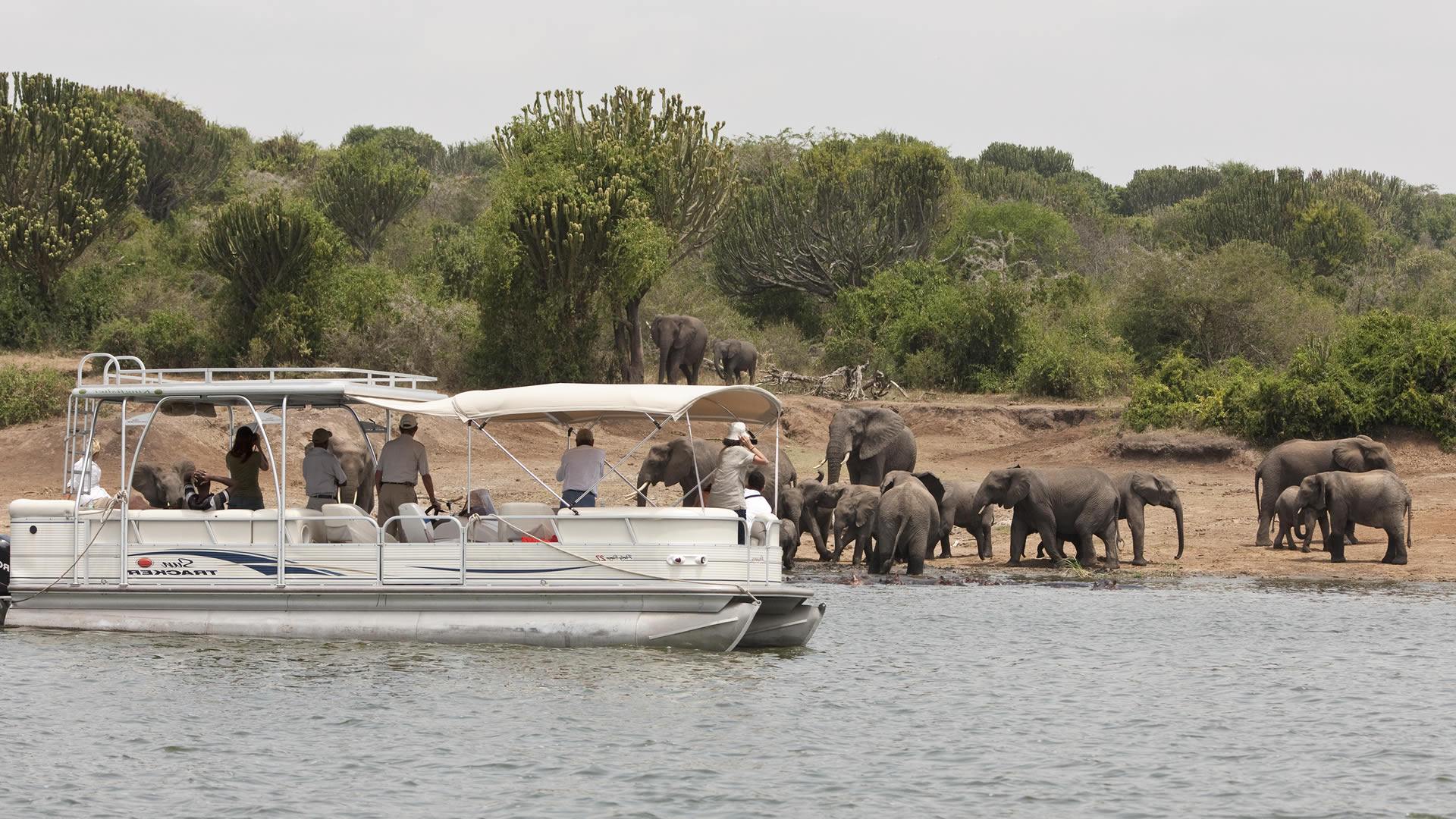

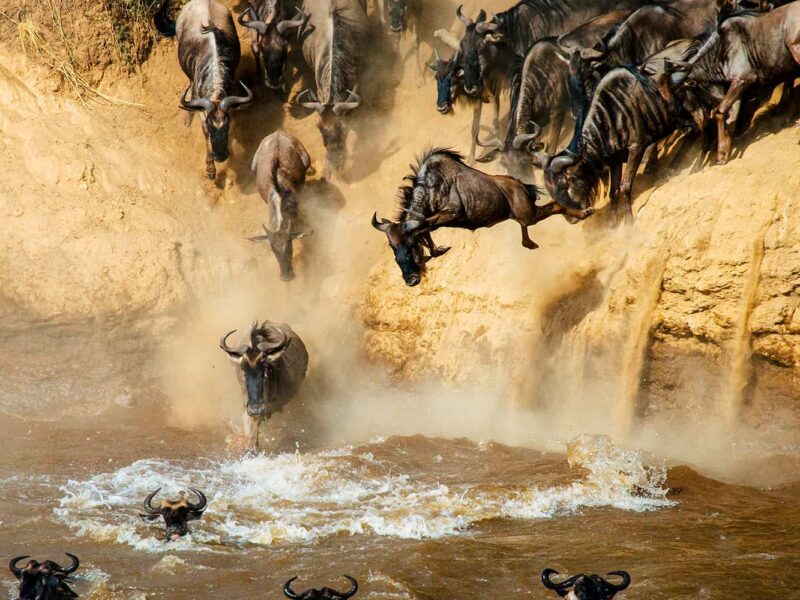
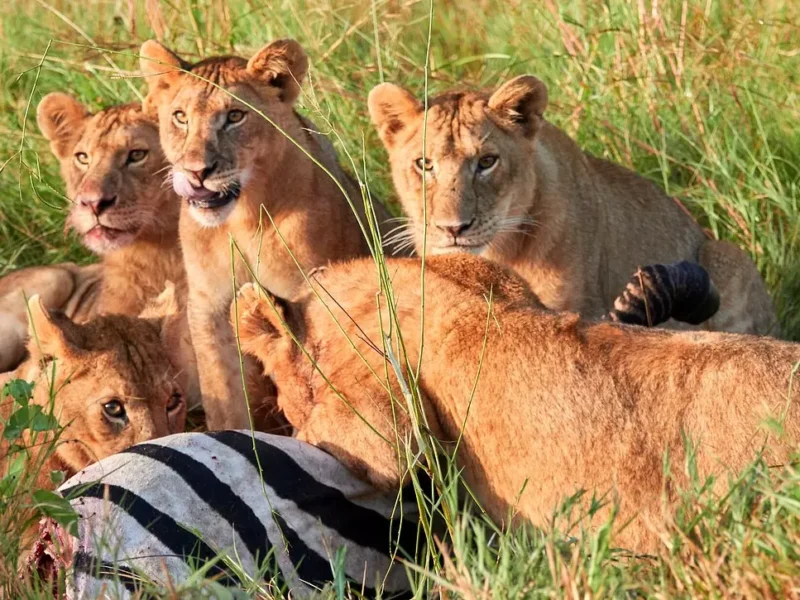
1 Comment
[…] Queen Elizabeth National Park Tours […]